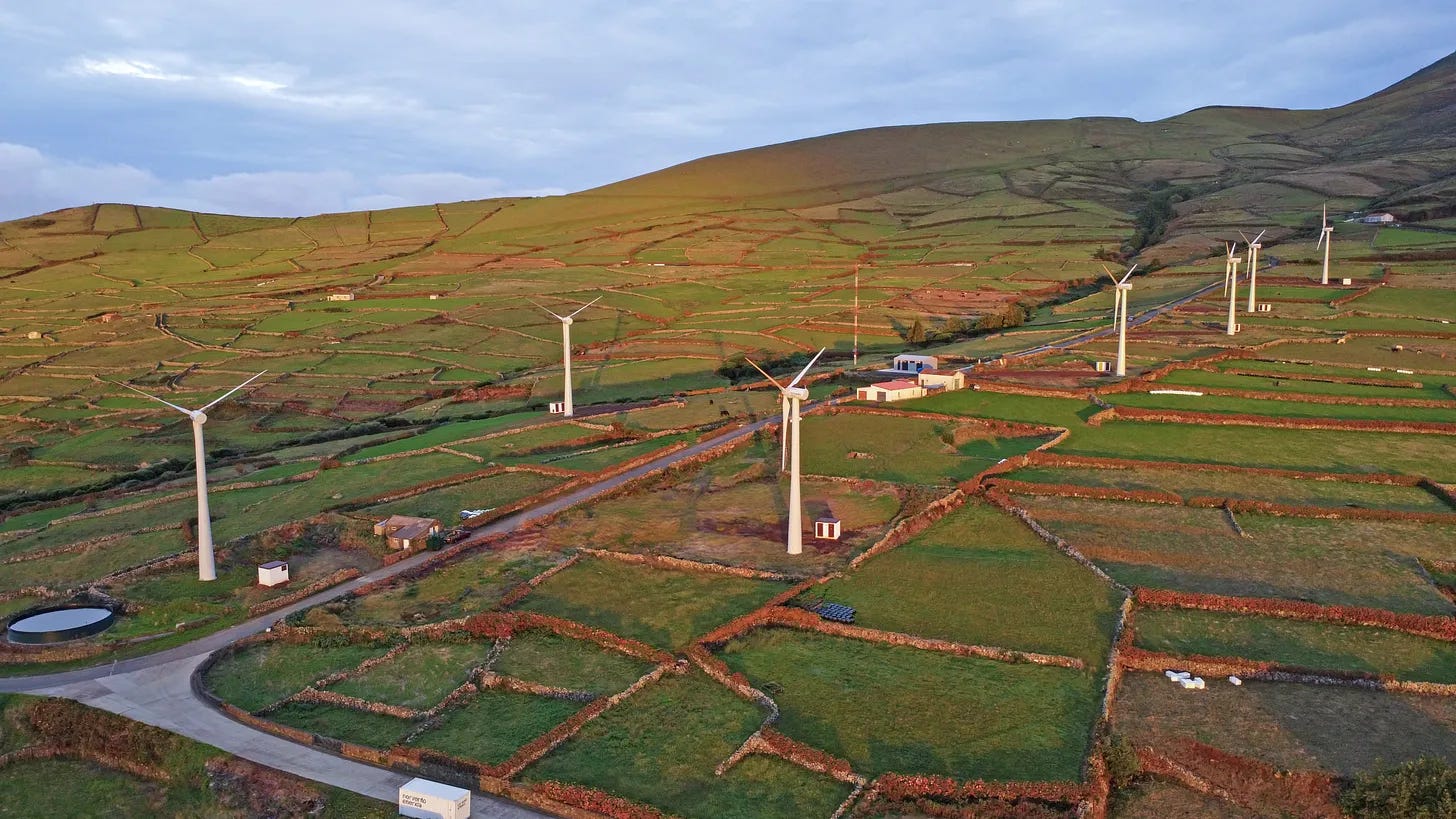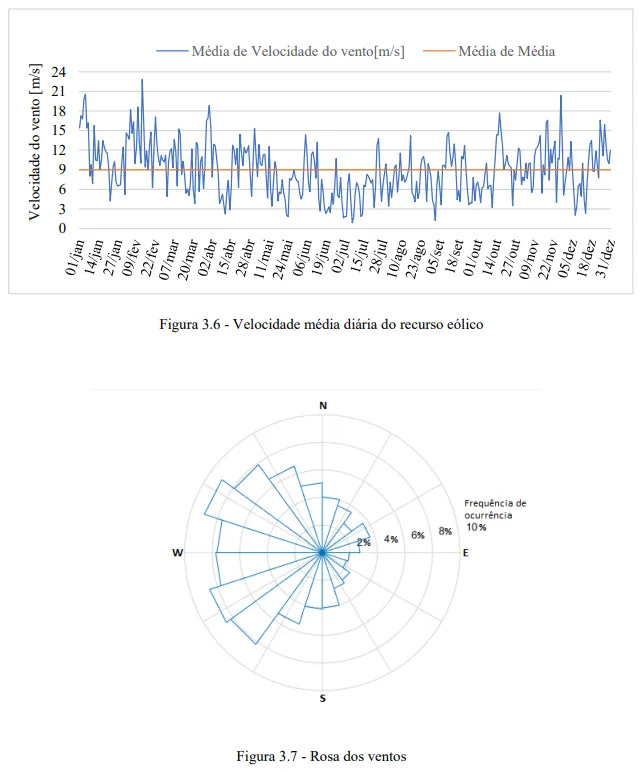Windstory #13 - 7 wind turbines of 100 kW for an island of 400 inhabitants in the Azores (I)
The history and technology behind the Corvo Island wind farm, a project by Norvento Enerxía located on a small island in the Azores and equipped with 7 wind turbines of 100 kW each.
Hello everyone and welcome to a new issue of Windletter. I'm Sergio Fernández Munguía (@Sergio_FerMun) and here we discuss the latest news in the wind power sector from a different perspective. If you're not subscribed to the newsletter, you can do so here.
Windletter is sponsored by:
🔹 Tetrace. Reference provider of O&M services, engineering, supervision, and spare parts in the renewable energy market. More information here.
🔹 RenerCycle. Development and commercialization of specialized circular economy solutions and services for renewable energies. More information here.
🔹 Nabrawind. Design, development, manufacturing, and commercialization of advanced wind technologies. More information here.
Windletter está disponible en español aquí
Windstory is the articles section of Windletter, where we publish single-topic analyses and share interesting stories from the wind energy sector.
From time to time, without a set schedule, a new edition of Windstory will arrive in your inbox.
Today we bring you one of those stories we love to write at Windletter. It is a unique, special project—one of the very few in the world due to its specific characteristics.
Moreover, it is led by a Spanish company, Norvento Enerxia, showcasing the level and position of the national wind industry on the global stage.
In addition, Norvento has kindly answered our questions, allowing us to share exclusive content in Windletter.
100 kW wind turbines and an island of 400 inhabitants in the Azores
This story begins in the heart of the Atlantic Ocean, on the small island of Corvo, the smallest of the Azores archipelago (Portugal). The island covers an area of only 17.13 km², with 6.5 km in length and 4 km in width, where barely 400 people live, concentrated in the small town of Vila do Corvo. It is one of the last places in Europe to the west—the edge of European territory in the Atlantic.
Until quite recently, electricity generation on the island of Corvo depended exclusively on a diesel thermal power plant. But for the past few months, 7 small 100 kW wind turbines have become part of its landscape. As you can imagine, the wind resource conditions in a place like this are exceptional. In fact, the old windmills still present on the island already hinted at that potential.
This is a project promoted by EDA Renováveis, the renewables subsidiary of EDA (Electricidade dos Açores), the company responsible for electricity supply in this Portuguese archipelago. The project was carried out by the Spanish company Norvento in EPC format, including manufacturing (the turbines are a Norvento in-house design), transport, supply, civil and electrical works, and turbine installation.
Bringing wind power to a place like this is no easy task for several reasons. Large commercial wind turbines are not a real option, as there is not enough electricity demand on the island, nor is there any physical possibility of transporting them.
Moreover, there are hardly any turbine options left on the market in the 0.5–1 MW range that are not second-hand. Large manufacturers stopped producing small turbines some time ago, as they lost their market and cannot compete in LCOE with larger wind turbines.
But more importantly, it probably wouldn’t be possible to transport these 0.5–1 MW turbines to the island of Corvo due to the logistical limitations of the port and the island’s roads (see port and roads in Maps).
Given these constraints, it was no coincidence that Norvento Enerxía set its sights on Corvo as a perfect location for its nED100 wind turbine. It is a 100 kW turbine, of proprietary design, and due to its size and capacity it sits in an intermediate position between small-scale wind power and “large-scale” wind in the 0.5–1 MW range mentioned above (we will provide more details later).
The Galician company has spent years identifying opportunities for these turbines in isolated communities, places where dependence on fossil fuels makes electricity more expensive and limits development. In this context, the Azores emerged as an ideal setting for implementing their distributed wind power technology.
The electrical grid on the island of Corvo
The wind farm is integrated into a grid composed of a conventional diesel thermal power plant of around 800 kW and a small photovoltaic plant. It is a grid that operates at medium voltage, at 15 kV.
According to the data I have found, the approximate consumption of the thermal power plant is 1,000 liters of diesel per day.
As is often the case in island territories, the wind resource is quite good, which has made the island of Corvo an ideal location for the installation of these wind turbines.
The expected capacity factor of the wind farm is 32.5%, which may not seem spectacular, but we are talking about wind turbines with a hub height of only 24.5 meters. And as we well know, height is a fundamental parameter for accessing better wind resources. In other words, with current wind turbines, with hub heights of around 100 meters, the capacity factor would very likely be significantly higher.
Below we can see the wind measurements obtained from the weather station at the island’s small airfield. The average wind speed is 8.9 m/s at a height of 10 meters (if I found the data correctly).
The 700 kW (7 x 100 kW) from the wind farm represent the first major step toward reducing the consumption of fossil fuels in the island’s generation mix. EDA Renováveis is also studying storage projects that would allow for efficient management of renewable production in accordance with consumption demands.
The challenges of the project
As you can imagine, building a project on such a remote island with very limited technical resources is a major challenge. In this case, there is the added complexity of it being a turnkey project, carried out by Norvento from the initial concept, through the detailed engineering development phase, to the construction and commissioning phases, and also including the subsequent maintenance of the wind farm.
Even though we’re talking about small wind turbines compared to industry standards, logistics alone have been a major challenge.
The mooring capacity of the existing port is very limited, both due to its draft and its dimensions and orientation. With the current infrastructure, it is not possible to unload items weighing more than 10 tons or larger than a standard container.
In addition, the island’s changing and extreme weather conditions often limit ship arrivals and make turbine installation unfeasible outside the summer months.
The lack of available resources was such that, in an initial phase, it was necessary to ship in by sea the raw materials (sand, gravel, cement...) required for the civil works, as well as the associated machinery.
According to Norvento, “the logistical complexity is not just about being able to do it technically, but becomes a critical point in terms of planning and costs.”
All these constraints highlight the need for technologies that are easy to assemble, transport and maintain in order to carry out the project.
In the second part next Thursday, we will discuss the transport and installation of the wind farm, the technical data of the nED100, its manufacturing, and the current state and challenges of the small wind power sector. All of this will be accompanied by videos and technical details.
If you don’t want to miss it, subscribe.
Thank you very much for reading Windletter and many thanks to Tetrace, RenerCycle and Nabrawind our main sponsors, for making it possible. If you liked it:
Give it a ❤️
Share it on WhatsApp with this link
And if you feel like it, recommend Windletter to help me grow 🚀
See you next time!
Disclaimer: The opinions presented in Windletter are mine and do not necessarily reflect the views of my employer.













This is very interesting to see that there is still a potential market for smaller wind turbines in remote locations.